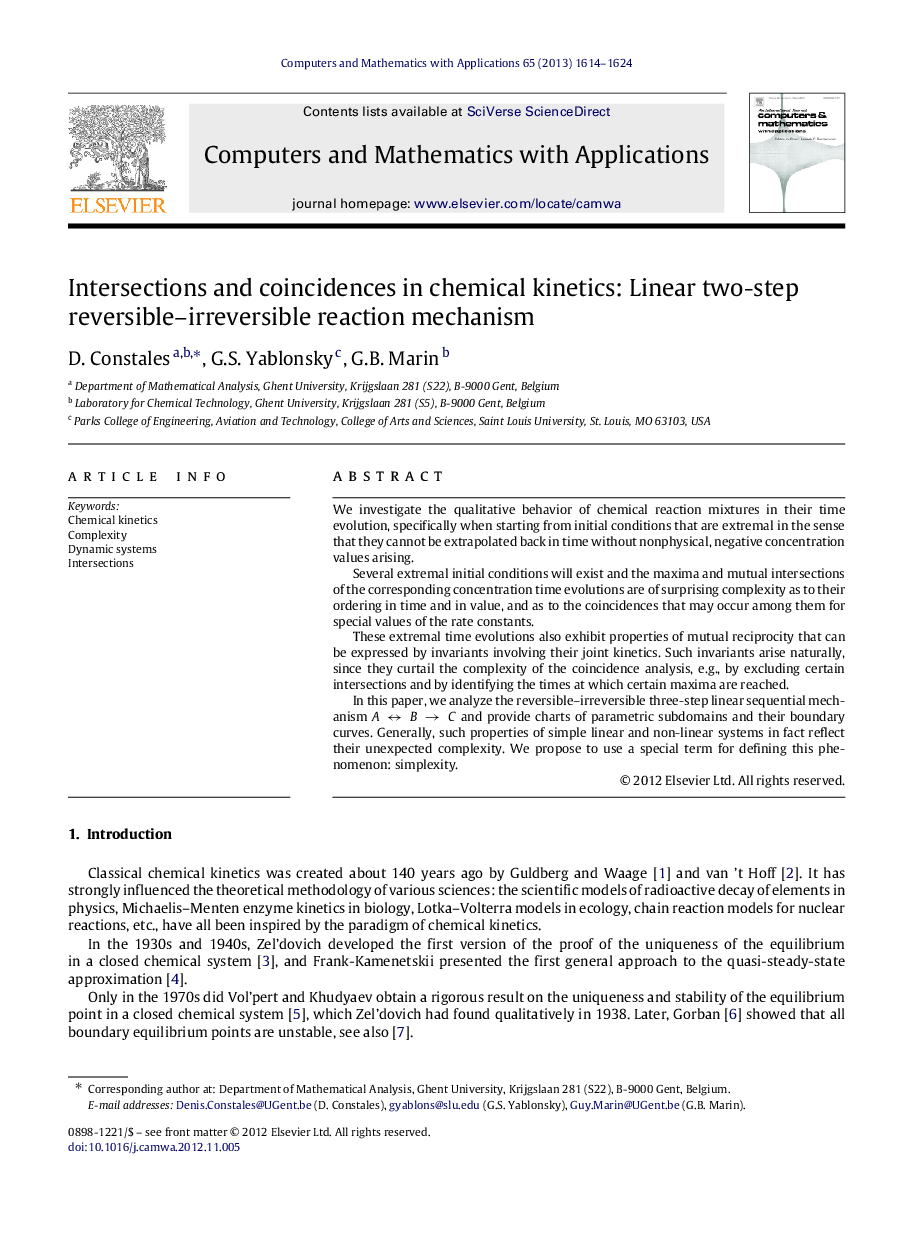| Article ID | Journal | Published Year | Pages | File Type |
|---|---|---|---|---|
| 468200 | Computers & Mathematics with Applications | 2013 | 11 Pages |
We investigate the qualitative behavior of chemical reaction mixtures in their time evolution, specifically when starting from initial conditions that are extremal in the sense that they cannot be extrapolated back in time without nonphysical, negative concentration values arising.Several extremal initial conditions will exist and the maxima and mutual intersections of the corresponding concentration time evolutions are of surprising complexity as to their ordering in time and in value, and as to the coincidences that may occur among them for special values of the rate constants.These extremal time evolutions also exhibit properties of mutual reciprocity that can be expressed by invariants involving their joint kinetics. Such invariants arise naturally, since they curtail the complexity of the coincidence analysis, e.g., by excluding certain intersections and by identifying the times at which certain maxima are reached.In this paper, we analyze the reversible–irreversible three-step linear sequential mechanism A↔B→CA↔B→C and provide charts of parametric subdomains and their boundary curves. Generally, such properties of simple linear and non-linear systems in fact reflect their unexpected complexity. We propose to use a special term for defining this phenomenon: simplexity.
